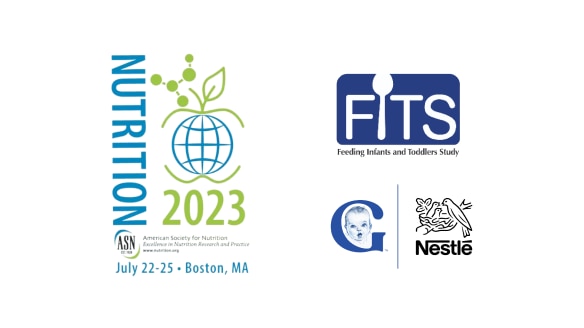Infant Cereal is a Top Food Source of Key Nutrients
4 min read • By: Lyndsey R. Huss1, Susan Pac1, Alison L. Eldridge2, Cheryl Callen1, Lynda O-Neill2
1Gerber Products Company, Nestlé Nutrition; 2Nestlé Institute of Health Science, Lausanne, Switzerland

Quick summary
At the American Society for Nutrition Conference, Gerber presented their poster for a study determining the top food sources for iron, calcium, folic acid, and vitamin C in infants ages 6 to 11.9 months old. Complementary food sources consisted of infant cereals (iron, folic acid, and calcium), 100% juice and fortified fruit purees (vitamin C), and dairy foods (calcium). These foods, and the key nutrients they provide, should be considered when providing complementary feeding guidance to ensure dietary adequacy and to help minimize the absorption and effects of heavy metals in the body.
Top food sources of key nutrients study
Background
The Dietary Guidelines for Americans (DGAs) recommend infants consume a variety of nutrient dense foods starting around 6 months of age.
Underconsumption of iron is of public health concern among breastfed infants 6-11.9 months of age.
Iron is a critical nutrient for brain and learning development.
Adequate intakes of iron, calcium, folic acid, and vitamin C potentially have a modulating effect on heavy metal metabolism and may protect against low level environmental contaminant exposure.
Objective
Identify the top food sources of iron, calcium, folic acid and vitamin C for infants 6-11.9 months old.
Methods
FITS is a large national cross sectional survey of children ≤4y (n=3235)
Food and beverage intake was assessed using 24 hour dietary recalls.
The focus of this work is infants 6-11.9 months old (n=902).
Reported foods are aligned with USDA’s What We Eat in America food groups.
The population percentage contribution of foods to total nutrient intake was determined for each nutrient.
Results
Infant formula and breast milk were the main contributors of nutrient intakes (50-60% of intake).
Infant cereals are the top complementary food source of iron (34% of intake), folic acid (18% of intake), and calcium (13% of intake).
100% juice and fortified infant fruit purees are the top sources of vitamin C in the diet (11% and 10% of intake, respectively).
Family cereals also contribute to iron and folic acid intake (4% and 15% of intake, respectively).

Conclusions
The top food sources of nutrients are those contributing most to meeting the needs of infants.
These foods are fortified infant cereals for iron and folic acid, 100% juice and fruit purees for vitamin C, and dairy foods for calcium.
These foods, and the key nutrients they provide, should be considered when providing complementary feeding guidance to ensure dietary adequacy and to help minimize the absorption and effects of heavy metals in the body.
Practice Applications
Being adequately nourished in key nutrients is an important way the body is protected against environmental contaminants such as heavy metals (US FDA Closer to Zero: Action Plan for Baby Foods)
Adequate intakes of iron, calcium, folic acid, and vitamin C potentially have a modulating effect on heavy metal metabolism and may protect against low-level environmental contaminant exposure.
These foods, and the key nutrients they provide, should be considered when providing complementary feeding guidance to ensure dietary adequacy and to help minimize the absorption and effects of heavy metals in the body. Foods that can help provide these nutrients to infants include:
- Fortified infant cereals (iron, folic acid, and calcium)
- Vitamin C rich fruits and infant fruits fortified with vitamin C



